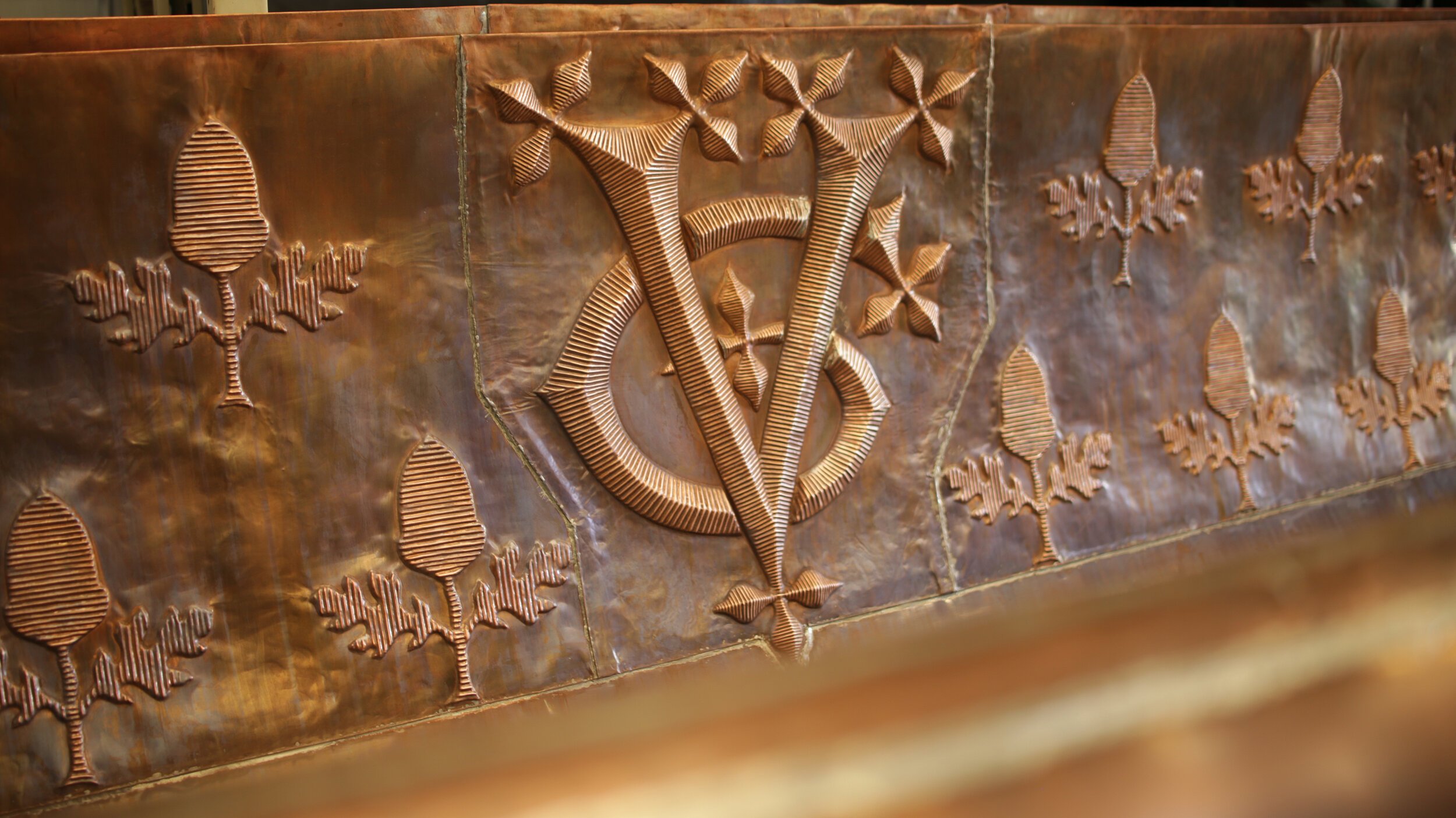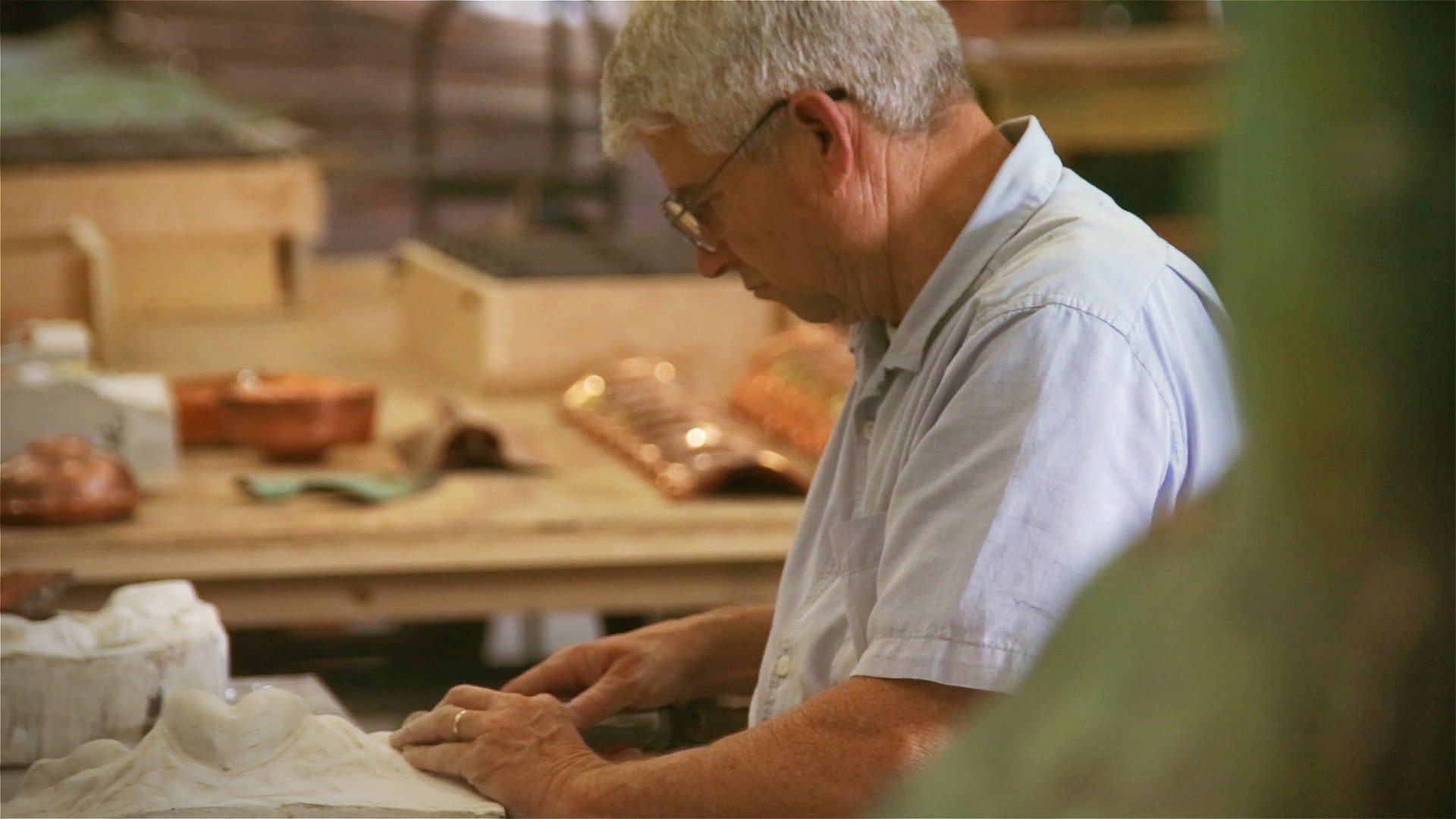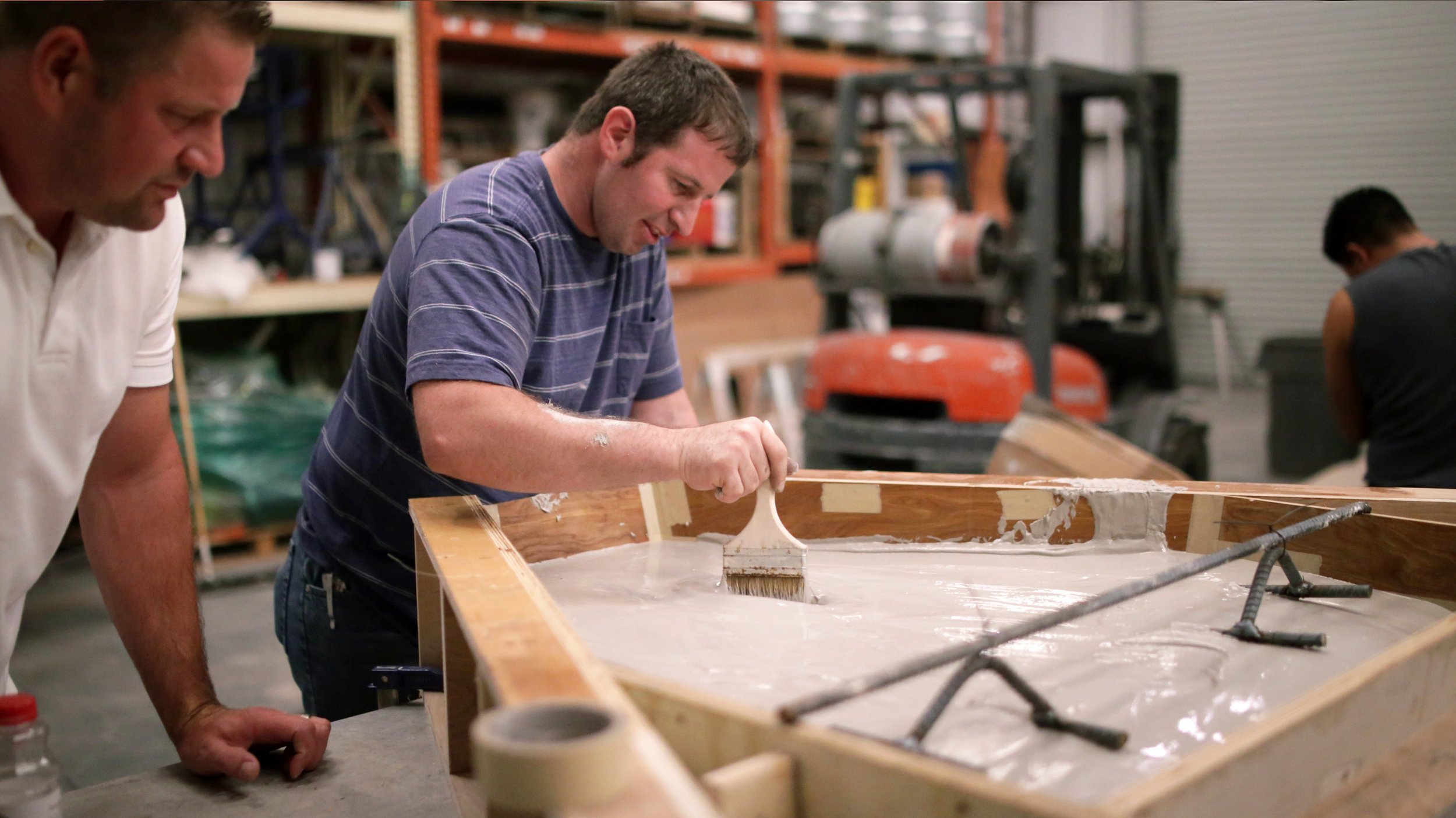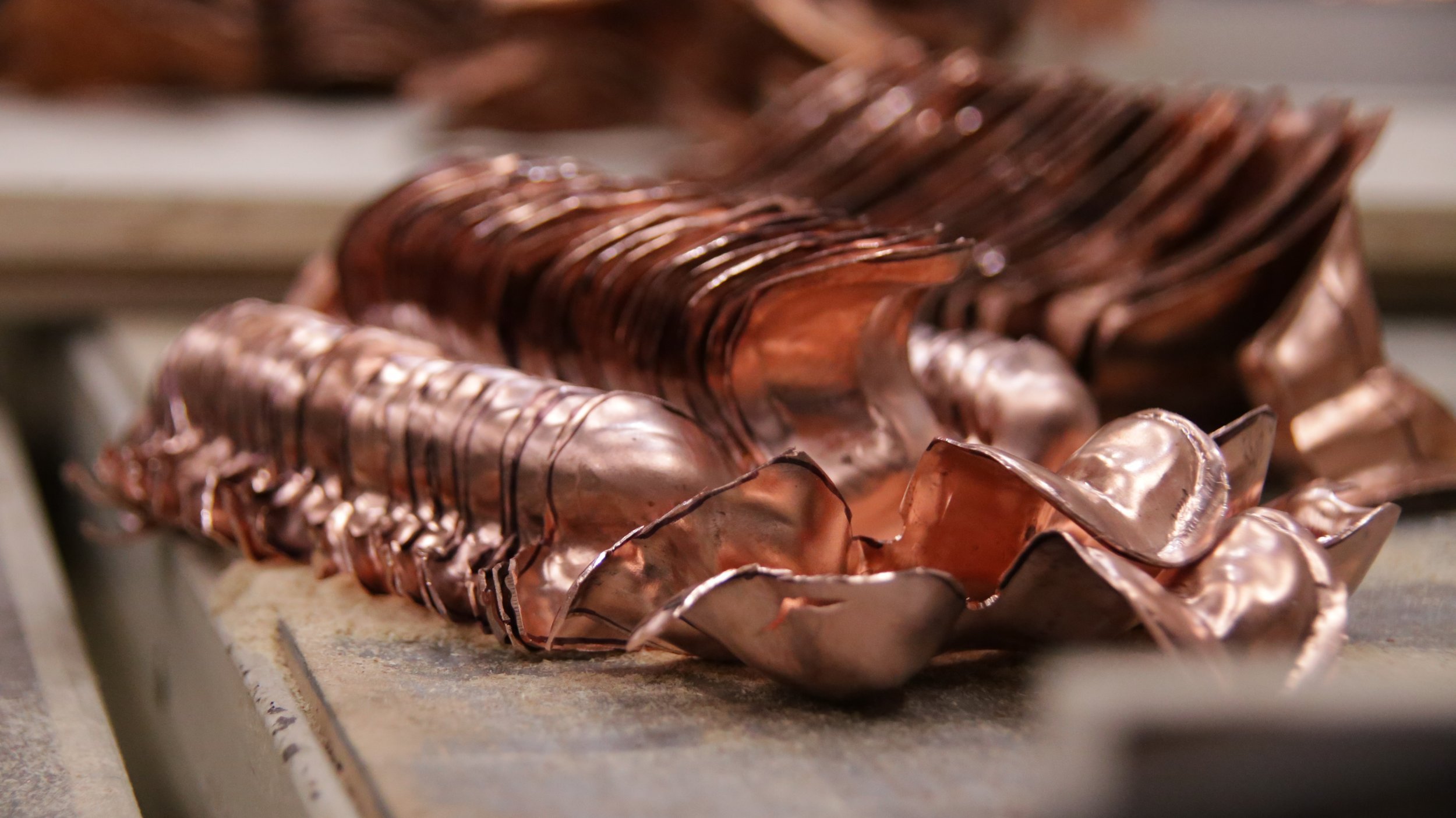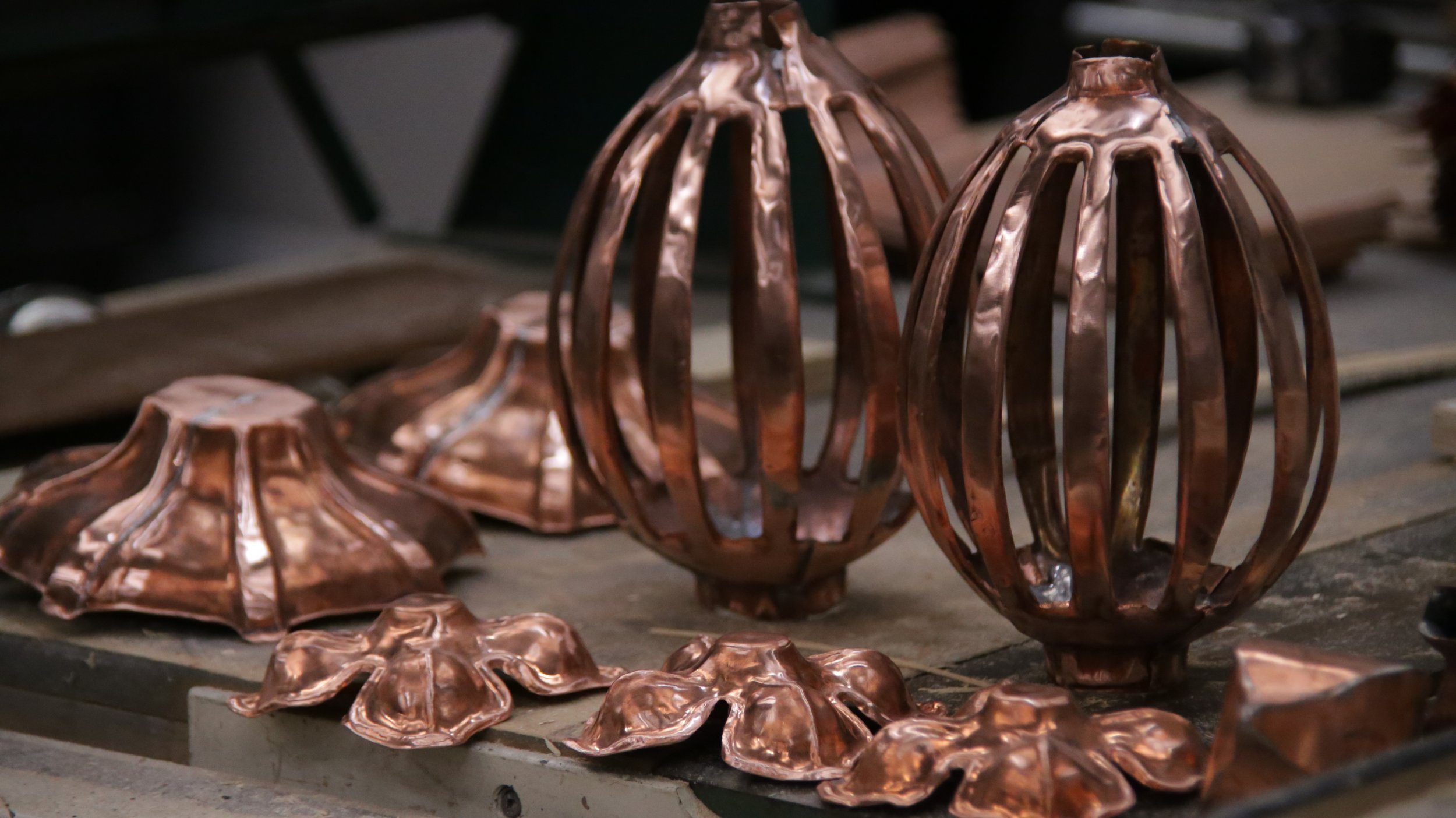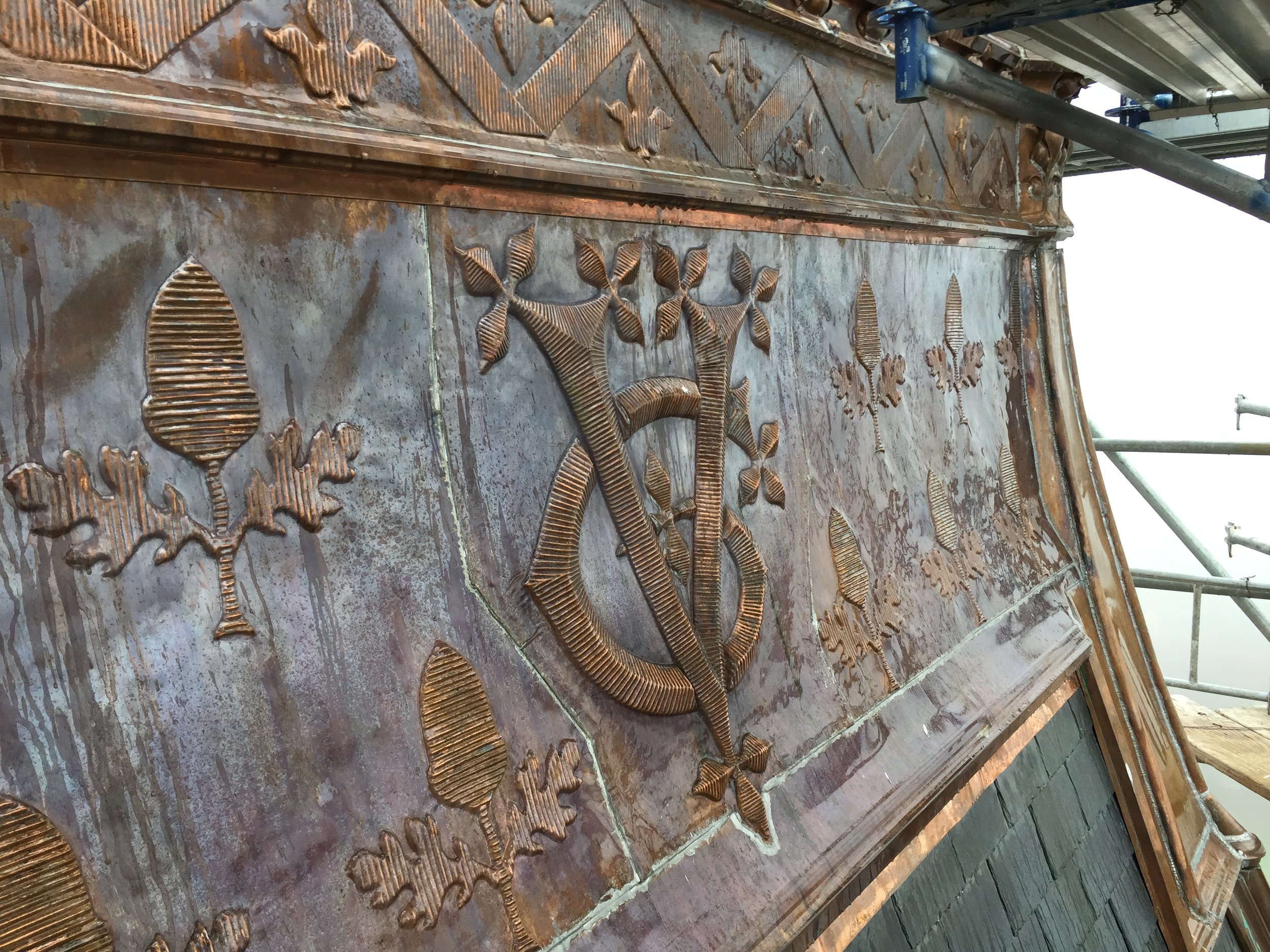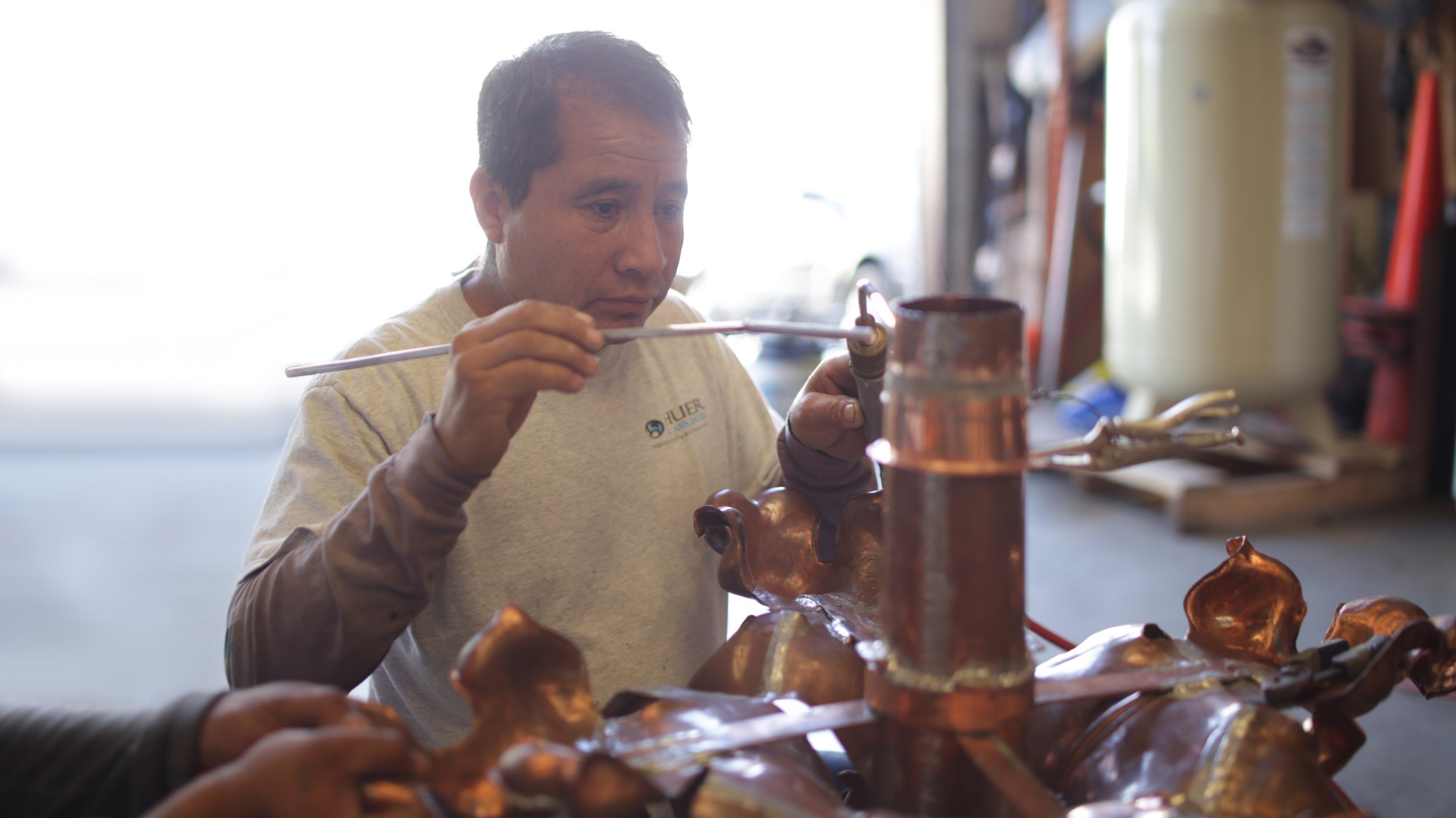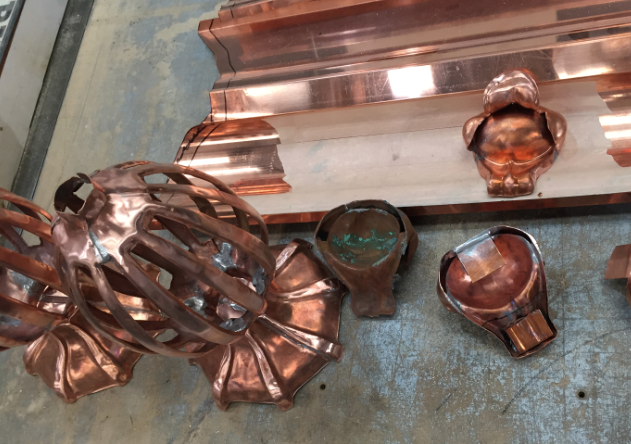the biltmore ridge restoration
It was among one our very proudest moments to replace such beautiful craftsmanship atop America’s Largest Home. Replacing the North Tower’s Copper Ridge Cap required ingenuity and old-world workmanship, and we were up to the challenge. (See the Biltmore Estate’s Copper Ridge Update in our blog for more photos and behind the scenes.)
The Biltmore: An Attraction To See
In 1895, George and Edith Vanderbilt completed construction of their new home, the 250-room chateau, known as the Biltmore, in the mountains of western North Carolina. With gardens designed by the legendary landscape architect, Frederick Law Olmstead, the new estate stood as the largest private home in North America and the quintessential blending of elegance and environmental conservation. By all accounts, it was a marvel to see.
One hundred and twenty years later, the house and grounds remain an extraordinary attraction, drawing over a million visitors to the estate each year. Whether they come to see the original works of great artists, the tapestries, the 10,000-volume library or the 250 varieties of roses in the Rose Garden, they’ll leave with lasting memories and the experience, if for only a moment, that the sands of time had slowed.
Preserving History while Utilizing Old-World Techniques
Although only the finest craftsmen using the finest materials constructed the Biltmore, the estate requires maintenance and responsibility for preserving the Biltmore’s historic buildings lies with Brent Merrill, Director of Engineering Services. Challenged with preserving the character of the Biltmore as well as the integrity of the original design proves challenging and, according to Brent, “it is no easy task to find people today who understand old-world techniques, who can deliver authentic solutions with the same promise of lasting performance and yet meet the needs of a dynamic business.”
In 2014, Brent faced the challenge of restoring the copper ridge cap on the North Tower of the Biltmore home. The existing cap, a signature design element of the Vanderbilt home installed more than a century earlier, had begun to leak and had to be repaired. Again, character and design integrity to provide the same lasting performance ranked foremost; but who could do the work? What’s more, who could restore the ridge cap in a timely manner without disrupting tourist operations?
Limited access to the ridge, 150 feet in the air and 130 feet from the front of the building’s edge, made the project even more daunting. With no crane large enough to support such a project in Western North Carolina, the scope of repairs would have to include custom scaffolding. Again, Brent wondered, “who could do this type of work and would he need to hire more than one contractor?”
Huber & Associates Take on the North Tower Project
After much consideration, Brent selected Huber & Associates of Lake City, FL to complete the repairs. Barry Huber, the president of Huber & Associates, and his team had a reputation for custom metal work and had the ability to manufacture any needed copper components in house. Huber & Associates also understood old-world techniques, having restored, and thus preserved, countless historic buildings throughout the U.S. Huber & Associates launched the North Tower project in April 2015.
To solve the issue of access, Barry designed scaffolding that would tie into the North Tower’s iron infrastructure and thus eliminate the need to build from the ground up. His scaffolding utilized three horizontal beams, run through the vertical pitch of the roof, and secured to the interior support structure. These three beams provided the undergirding for a floating scaffold; see picture. This unique design accelerated the project, saved the Biltmore tens of thousands of dollars, and, by enabling the restoration team to access the roof from the rear, or service side of the building, minimized the disruptive effect on tourists entering the estate.
With access to the North Tower ridge secured, the team went to work on the copper-ridge cap. The scope of the restoration effort included: (i) disassembling the ridge; (ii) unsoldering the individual components; (iii) inspecting, cleaning and repairing salvageable components; and (iv) manufacturing all unsalvageable components.
Understanding Copper & working with design elements
Although copper surfaces experience minimal corrosion, between 0.0001mm and 0.0003mm per year or, between 0.01mm and 0.03mm per 100 years, a thorough metallurgical analysis of ridge components revealed stress problems and corrosion in many of the joints where individual components had been soldered together. Design elements, such as the floral assembly shown in the adjacent photograph, comprised many individual copper components, all of which had been soldered together, and, much like the proverbial chain, the integrity of the assembly proved only as strong as its weakest joint.
In the end, the weakness of the seams, and not the condition of the copper itself, led to the decision to replace all ridge-cap components. The original ridge cap had endured for more than 100 years, sustaining all forms of weather, but could do so no longer. It stood as a testament to those craftsmen who made it and a challenge to those who would replace it. Using different molds ranging from 9 square inches to 9 square feet, and 19 types of turnings, Huber & Associates went to work manufacturing 988 different copper components, all aesthetic rather than structural. For larger components, the team restored and employed a restored CecoStamp Drop Hammer.
Following the manufacture of components, Huber + Associates installed the replacement ridge cap, removed the scaffolding and restored the North Tower roof to its original design, all before the deadline of November 2, 2015: the first evening of the Biltmore’s Candelight Christmas. One wonders who will have the ability to complete this project in the 22nd century when the next ridge cap is needed.
Brent Merrill expressed high approbation for Huber & Associates, commenting on their skills, professionalism and sensitivity to the Biltmore’s needs. As he put it, “Huber & Associates preserved the character of the North Tower” or, more simply, as the after picture on the right suggests, “what came off was what went back on.”
CONTACT US
Fill out the form below to contact us about your copper roof restoration, or give us a call at 800-327-8115.



